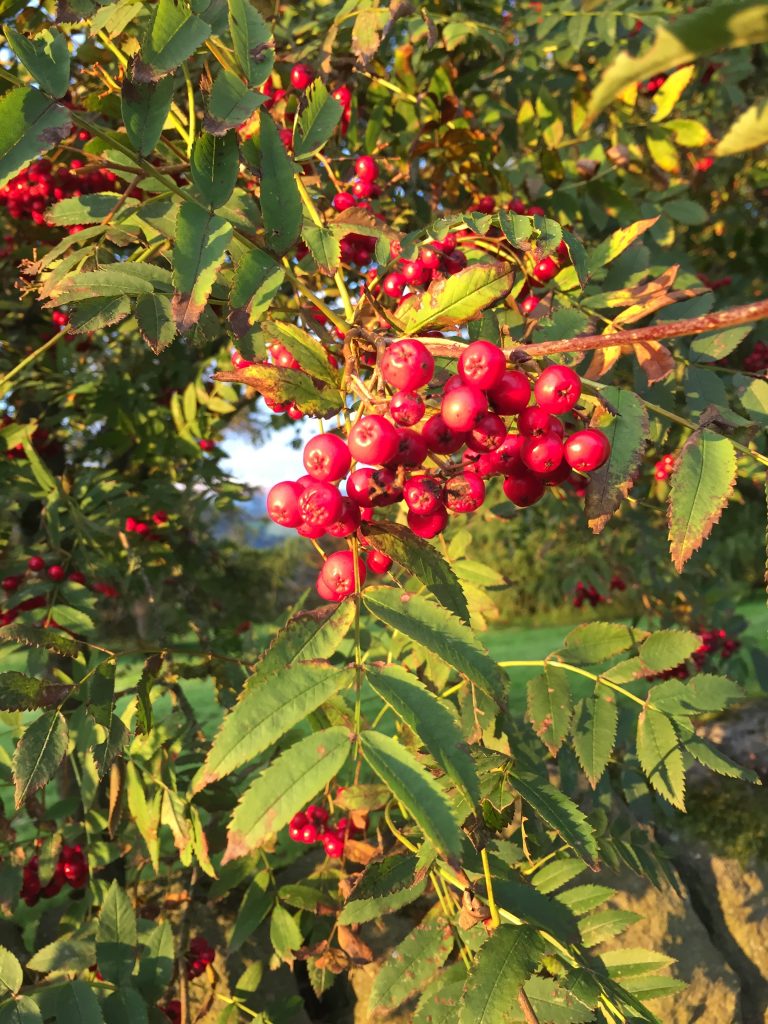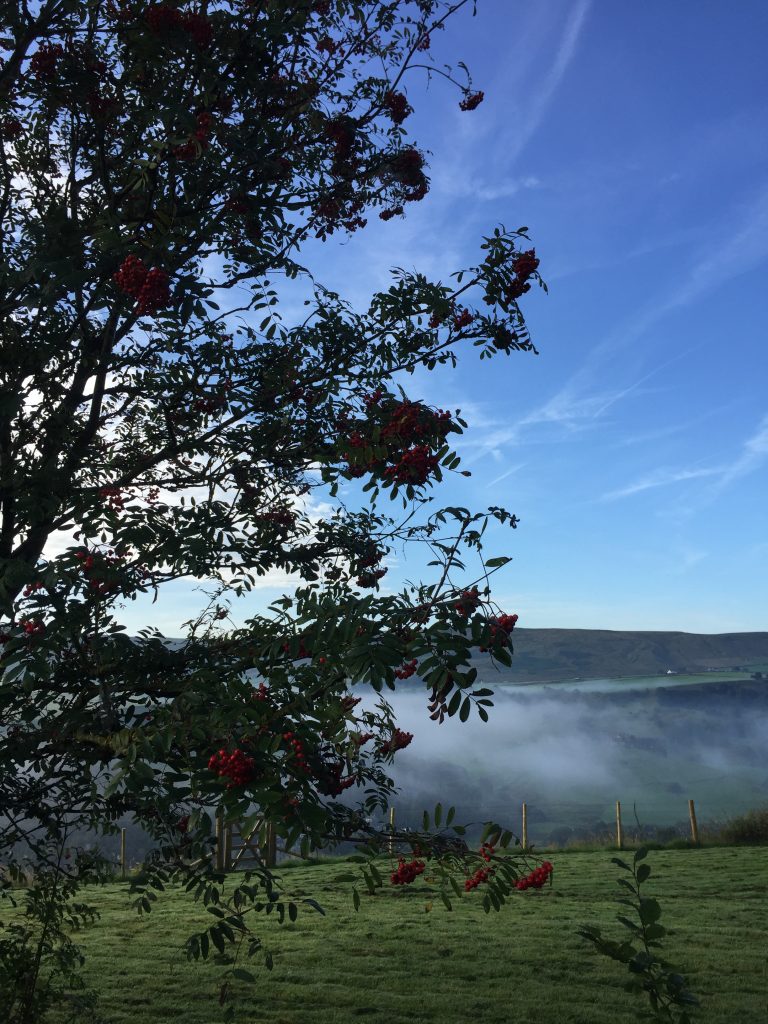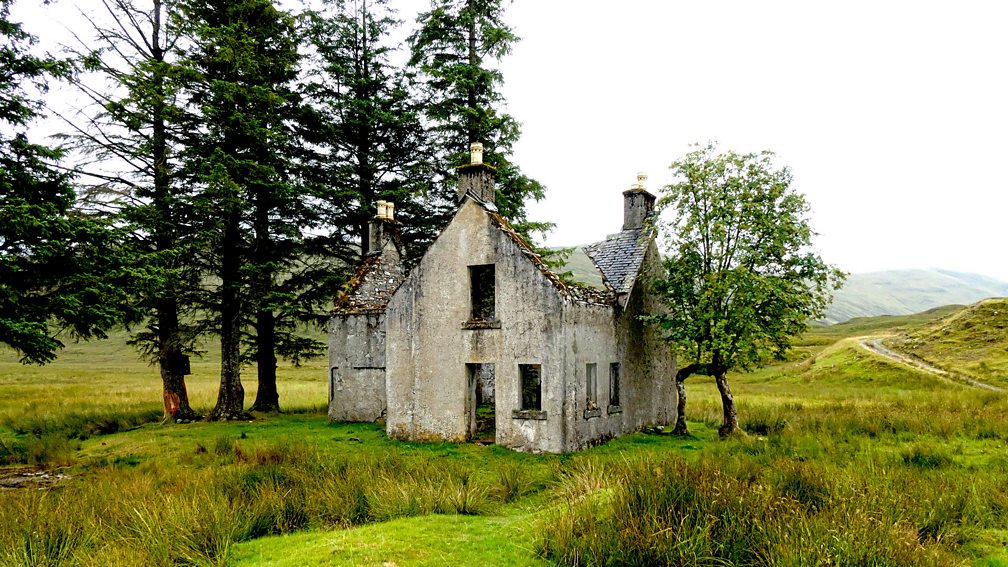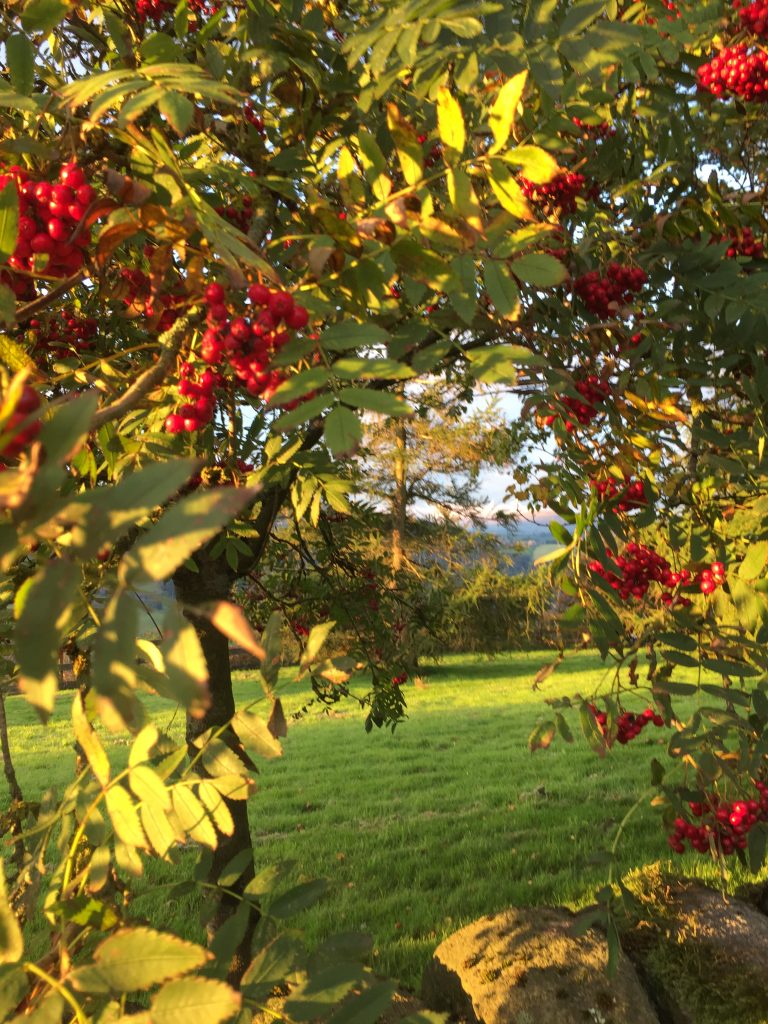Uses

A very tough wood, rowan has been used for many objects over the centuries such as ship masts, poles and whips. Spindles and spinning wheels were also made from Rowan. Due to the tree’s association with protection, walking sticks were made from it and milk churns were surrounded by rowan twigs (to prevent evil turning it or thieves stealing it). Rowan sticks were used to divine metals underground. The berries were utilised to lure birds into traps and when times were hard, they were ground up, as a substitute for flour. Rowan jelly can be made out of the berries and crab apples. Silver Birch and Rowan are classed as ‘nurse trees’ because they are the first trees to colonise an area of scrub. They are quick to establish in poorer soil and fix nitrogen into the soil, preparing and conditioning it for other trees.
Myths and legends

The Ancients regarded it as the Tree of Life. In Greek mythology it is said that the first Rowan trees came from the feathers and blood of Zeus’ eagle as it fought demons. In Scandinavian legend the first man was born from and Ash tree and the first woman from a Rowan. The Rowan is said to have rescued Thor from a fast flowing river by bending its branches over so he could catch them. Light and the moon connect the Rowan to mid-winter in several traditions, including Icelandic and Christianity. In Irish lore, the tree is believed to be protected by dragons. In druidic lore it’s the other way round and rowan was grown near sacred sites. Dragons are believed to have been the life forces of the land or energy lines (ley lines as they are now referred to) and stone circles were built at points where the lines converged, with rowan trees planted to protect them.
The rowan has been used for centuries by people across the British Isles to ward off evil and as a symbol of protection in their homes. In the Scottish Highlands, in particular, it was often used for making the cross beams of chimneys. Rowan sticks were laid across the lintels on Equinox and Solstice days. It is still believed to be unlucky to fell a rowan tree. A recent contributor to my website, Mark Fox, drew my attention to this incredible rowan arch growing beside a bothy in the Highlands that was featured in the BBC Sounds podcast ‘Uncanny’.

Medicinal uses
This information is purely for interest, any use of this as a medicine needs to be taken under the instruction and guidance of a registered herbal practitioner.

It has been used for centuries as an astringent and antibiotic. Meditation by a rowan tree is said to be good for relaxation and to lift the spirits. A decoction of the bark is an old remedy for diarrhoea. The berries used to be prepared in a decoction and used as a gargle for sore throats and inflamed tonsils. An infusion can be used externally for haemorrhoids and to cure scurvy.
WARNING- the berries eaten raw can be poisonous, especially to children.
Medical disclaimer
This post is not intended to provide diagnosis, treatment or medical advice. Any mention of medicinal uses are for informational purposes only. The use of any herb or derivative is entirely at the reader’s own risk. The author of this post cannot be held liable for anyone using these medicines. It is strongly advised that any usage is in consultation with a registered herbalist and/or qualified doctor.
Check out this site to help with identifying the Rowan tree: ://www.woodlandtrust.org.uk/trees-woods-and-wildlife/british-trees/a-z-of-british-trees/rowan/
« Back to blog page